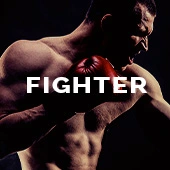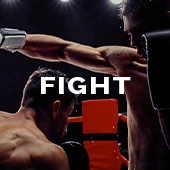Three days before the biggest fight of his career, against Ryan Garcia in Las Vegas in April 2023, Gervonta Davis was nowhere to be seen at the public workout he had been scheduled to perform to help to promote the fight at the T-Mobile Arena, and instead was simply said to be elsewhere at the MGM Grand.
The day before then he had been almost an hour late to the grand arrivals – he had also been late to the press conferences organised to promote their fight on their media tour – and a day later, at the final press conference, he barely spoke to anyone after the conclusion of what was said from the top table, and instead prioritised flashing wads of cash at Garcia while attempting to provoke him into a bet surrounding the outcome of their fight.
It was Davis who pushed Garcia after they weighed in, and Garcia who, not unlike his promoter Oscar De La Hoya once would have while an active fighter, honored his promotional commitments and spoke graciously about their fight in the way that every active fighter is so often told.
The first time that Davis, then 28, really seemed interested in speaking came in the aftermath of what represented his biggest win. Yet for all that the handsome Garcia, in his then-role as the boy next door, made his way to the ring that night in front of a celebrity-filled audience and looked, in his glittering gown, the world’s most marketable fighter, it was when the heavy-handed Davis started to follow him that the atmosphere at the T-Mobile Arena was transformed, and that there almost immediately existed in the air an unmistakable electricity.
Until the conclusion of that fight Garcia, 26, had represented a promoter’s dream, but it was Davis – apparently carefree despite the threat of time in prison hanging over him – who without even trying generated the almost-indefinable energy that only the most memorable showpeople can, and to the extent that to experience the atmosphere and excitement that evening was to be reminded of descriptions of that surrounding Mike Tyson at his era-defining peak.
“It’s counter-intuitive,” explained Stephen Espinoza, then of Showtime – the broadcaster of Davis-Garcia – and more recently a consultant for Premier Boxing Champions. “Not only does Gervonta not engage in a lot of traditional promotion, he’s not a big personality. He’s a little bit shy; a little bit reserved. He’s certainly got a sense of humour, and he’s a lot of fun to be around, but once you put him on that stage he’s not a stand-up comedian; he’s not gonna be overly loquacious.
“What it is is the unapologetic authenticity. He’s not someone who bigs himself up for social media or even in person. When you run into him on the street; what you see on social media; he’s the same guy. Then it’s also the juxtaposition of a somewhat shy and reserved baby-faced fighter who turns into a mini-Mike Tyson. It starts with the phenomenon – the excitement – he’s created in the ring of highlight-reel knockouts; of the athleticism; the aggression and the power. There’s a primal aggressiveness you see in his fights – it’s not about boxing. It’s about asserting control and dominance and ending the fight as quickly as possible. That’s where it starts.
“I’ve spoken to him about [the need to promote his fights]. There have been plenty of others. But he knows his audience, and he’s been successful on social media at building that. I’m not saying that he can’t use other tools, but you don’t want to push him to be somebody he’s not. He’s not gonna come off sounding like ‘Canelo’ [Saul Alvarez], or De La Hoya, or any of these guys who always seem to say the right things. What you get is authentic, and raw.”
Davis-Garcia was the latest demonstration of the evolution of Davis as not only a fighter and individual, but into so high-profile a figure beyond his sport. Six years earlier in London, on the occasion of his only fight outside of the United States when he stopped Liam Walsh at super featherweight, he had been polite and quiet, and at times even wide-eyed. The shadow cast by his almost endlessly-attention-seeking then-promoter Floyd Mayweather no doubt then contributed, but in the years since then – Davis was typically unwilling to be intimidated by Mayweather while their relationship and then separation became increasingly bitter – he has emerged alongside Saul “Canelo” Alvarez as the fighter the world most wants to see.
Mayweather and Tyson were among those ringside when he stopped Garcia with a body shot in the seventh round in the fight hailed as that to determine “the new face of boxing”; Drake placed a sizeable bet on him winning that evening; Mark Wahlberg and Mario Lopez were also among those present to see exactly what would unfold.
“When you’ve got a great match up, it bleeds over into popular culture,” Espinoza continued. “Together they reached even more people. It got to the point where you said, ‘I have to be there’; it was the closest thing to a Mayweather fight we’ve seen since Mayweather, in terms of the audience composition. It really was pretty even, demographically. You had a lot of the urban audience – and I don’t just mean black – you had southern California represented; you had the east coast; you had a black audience and a latino audience. If you had any inkling of an interest in combat sports, this was a fight you couldn’t miss. These two young guys in their prime – big personalities – clashing, and really enthusiastic, passionate supporters on both sides.
“To some it was bad-guy-good-guy. It almost looked a little bit like De La Hoya-Mayweather [in 2007]. Two guys who really have built their business on social media. All of the elements were there primed, and when you combine it and do it right, it exponentially builds upon itself.
“Since the end of the Mayweather days, the million-buy pay-per-view has become more and more scarce. All you’ve seen it with is Canelo-Golovkin [I and II] since Mayweather retired [in 2017]. Tank had his legal situation, but he remains very active on social media, and he’s clearly in fight mode, because he’s been picking fights with anybody and everybody on social media. There’s a part of him that wants to reassert, ‘I’m one of the faces – it’s been a while, but don’t forget I’m the draw’. Besides Canelo, and arguably one, maybe two, other big names, Tank’s the biggest fighter in the sport.”
In combination with Garcia – whose increased profile didn’t make his fight in April with Devin Haney as commercially successful as that against Davis, regardless of the reality that since then, in victories over Vasily Lomachenko and Regis Prograis, Haney had since recorded his two finest wins – Davis generated a gate $22.8 million, the fifth largest in Vegas history. Davis-Garcia therefore surpassed Mayweather-Alvarez – the fight between the two highest-profile fighters of their respective eras – and at a price of $84.99 also generated over 1.2 million pay-per-view buys.
The first press conference to promote Davis’ fight on Saturday with Frank Martin, at the MGM Grand Garden Arena, took place hours before Alvarez-Jaime Munguia, and that night when he was seen visiting Alvarez in his pre-fight dressing room, and then flashing the most photogenic of smiles while enjoying himself from ringside, it was Davis, until the exciting main event started, who so effortlessly drew the attention of the cameras and everyone else present, regardless of whether he wanted to or not.
“He’s not the same person y’all met when he first came on the scene,” said his long-term trainer, Calvin Ford. “He started to embrace ‘Becoming to become’ – he’s coming. Y’all gon’ see it. Y’all gon’ see it from here on out – it’s on a different level.”
“He has a tremendous amount of star power,” said his advisor Leonard Ellerbe, once so influential with Mayweather. “He’s explosive. He’s the most exciting fighter in the entire world, so everybody is gravitating towards that. Everybody wants to come and see that guy.
“Garcia’s definitely a star, but it’s all bullshit when they say, ‘He’s the reason why [that fight was so big]’.
“[Davis has] been a star. He’s just getting bigger and better every event. I talked about, ‘This is the most anticipated return’, because this is all everybody’s talking about, and he delivers.”
It was at that same press conference when the combined, natural confidence of the undefeated Davis and Ford – the trainer’s image is as unlike his colleague’s as perhaps is Davis’ behaviour – ensured that they unintentionally cut, alongside the proven and improving Martin, intimidating figures.
Davis didn’t present as a fighter who had arrived, specifically, with a desire to unnerve his opponent; like the most natural-born of fighters, it was when Martin was alongside him that he simply couldn’t resist.
It seemed similarly spontaneous when he demanded one of his associates pass him the phone on which exists footage of one of their sparring sessions, and for all that it took him an unusually long time to find it and that he then only attempted to show it to Martin, everyone present patiently waited while he did so because he is “Tank” Davis, and because there are those who believe that it has become worth monitoring his every move.
“Tank is being himself,” Ellerbe said. “He’s not trying to get into his head. Tank is being him.”
If “being himself” represents so much of Davis’ appeal, it has also repeatedly proved costly. In February 2019 an arrest warrant was issued over an alleged altercation with a man at an ATM in suburban Washington, before he began to argue with police. Davis allegedly shoved a policeman, and was charged with one count of misdemeanour assault in a case that was ultimately dismissed.
In February 2020 he was charged with simple battery domestic violence in Coral Gables, Florida after an incident with his daughter’s mother. In video footage he was seen forcefully grabbing the woman near her neck and pulling her out of her seat during a charity basketball game. He was held on $1,500 bail, and denied the allegations in a social media post he later deleted; in December 2022, the case was then discharged.
By then, however, he had been accused of fleeing the scene of a car accident in November 20202 that involved four people, a pregnant woman included. According to the police of Baltimore, his home city, he was travelling in a Lamborghini in the early hours when he ran a red light. He faced 14 charges, including failure to immediately return and remain at the scene of an accident involving bodily injury; he pleaded guilty to four counts, and was scheduled to be sentenced in May 2023, shortly after his fight with Garcia.
In December 2022 Davis was arrested after allegedly striking a woman with a “closed hand type slap”. He was released the following day after a court hearing where bail, according to the Broward County Sheriff’s Office, was set at $1,000. In a social media post he later deleted he denied the allegations; in May 2023 because the woman didn’t wish to press charges, the charges of battery and domestic violence were dropped. By then, however, he had already been sentenced to 90 days’ house arrest and given three years of probation and 200 hours of community service, having pleaded guilty to the four traffic offences stemming from the previous hit and run.
Davis was supposed to serve those 90 days in Ford’s home, but was taken into custody on June 1, having without permission moved to a luxury hotel and then a new home, and been punished by having to serve the remaining days in a Baltimore jail.
Not unlike with Tyson, whose marketability was so perversely enhanced following his release from prison having served three years for rape, it is difficult to avoid the conclusion that Davis’ popularity – in the tangible ways that it can be defined – has regardless repeatedly grown. Mayweather, similarly – having been sentenced to serve three months for domestic violence against the mother of three of his four children – once had his sentenced postponed by a Vegas judge to allow him to fight Miguel Cotto in 2012 after successfully arguing that his fights boost Vegas’ economy by more than $100m.
“It’s an undeniable part of culture and media today, and perhaps more now than ever before – the saying ‘All publicity is good publicity’ is probably more true,” Espinoza said. “We had a president, in Donald Trump, who got to the White House through that very method. ‘It doesn’t matter – as long as you’re talking about me, good, bad or indifferent, I have achieved my goal’. The controversy is sometimes a ‘good’ thing – there’s an ever-present coverage, and coverage in gossip blogs. ‘Who is Tank dating? What clubs is he hanging out at? Is he going to be able to fight with this legal situation over his head?’
“It’s one of the reasons boxing has done so well in Vegas, and is closely associated with it, because no matter what Vegas has become in terms of entertainment and shows and fine dining, there’s an edge of, ‘This is where people come to go crazy’. There’s an edge, ‘No one’s ever gonna clean up boxing’. There’s a rawness; there’s chaos to it. I’m not saying it’s a good thing to have legal problems, and certainly not the kind of legal issues that Tank has had, but in a grander scheme, that media world we live in where people are talking about you is generally a good thing for your business or future.
“The difficult thing with Tank is for a variety of reasons he couldn’t build on that momentum [of his victory over Garcia] right away. It’s been 14, 15 months. Ryan was much more present and active. We’re about to see exactly what that win did for Tank, as he goes forward against opponents who don’t have the stature of Ryan Garcia. We knew [that fight] would be big, but it was far bigger than expected. [And] given the reaction and the continued growth of Ryan Garcia, losing the Davis fight didn’t do anything to harm him, long term.”
Ellerbe argued: “It has nothing to do with being incarcerated; there’s no notoriety about that; it’s an experience; something you go through when you’re in that situation, and you move on from it”, but Hasim Rahman, like Davis of Baltimore and therefore familiar with the city recognised as being built on some of the US’s most unforgiving streets, said: “Individuals do what they wanna do. Tank got a propensity for getting in trouble now, since he been boxing. He grew up in the boxing gym, so it’s different. So if he get into something like that that’s just because he wanted to live that lifestyle. If you’re making tens and tens of millions of dollars, it’s kinda easy to stay away from that.
“The streets of Baltimore is still the streets of Baltimore, no doubt. [But] with the amount of money Tank is making, he can stay away from it.”
The trajectory of Davis’ life and career suggests that none – not even in so fine an era for heavyweight boxing – is capable of succeeding Alvarez as the world’s most recognisable fighter. But where Oleksandr Usyk, Terence Crawford and Naoya Inoue – who have already succeeded Alvarez as the world’s finest active fighters – can be relied upon to continue fighting, there remains the risk, and perhaps therein lies part of his growing appeal, that Davis’ career could so very suddenly be brought to a premature end.
“He is a fighter,” said Ford, “I can tell you that. He was hitting kids in their mouth when he was seven years old, all the way up to when he was 15, where I had to stop him. I had to tell Davis, ‘There’s certain things you cannot do to people’. We lost a kid named Ronald Gibbs [a fellow amateur boxer aged 17] – he got stabbed.”
“One thing about Baltimore is we love our own,” continued Rahman. “We’re not gonna try to get him in trouble when he come in town. If he looking for trouble, it’s there for him – they will embrace him that way, too. If he wanted to get into it there’s plenty of it for him. If he surrounds himself with individuals that’s still in the streets, they can bring him down.
“But Baltimore gonna love him and embrace him and wanna be proud of him, so we don’t really want him in the streets. We want him to succeed. It’s not like he’s got something to worry about. It’s up to him. We love our own and we want him to represent us.”
“This is a very credible fight, and potentially on paper, maybe the most difficult of Tank’s career,” Espinoza said. “With that does not come the level of exposure or credibility that you had with Ryan Garcia and other fights. Take the Garcia fight out of the equation, how does he perform against other fights against non-superstar fighters? It’s an interesting litmus test.
“He’s about to embark on a really interesting piece of his career, because he’s made very clear to everybody – ‘Only big fights’.”



